If you want to get a better ROI from your brand, one of the most effective ways is to learn from the mistakes of others—it’s ten times more powerful than learning from your own. In this blog, we’ll explore the marketing mistakes made by Meshable, while also highlighting what they’re doing right—so you can apply the good stuff to your own marketing efforts and boost your sales.
Table of Contents
Meet Our Star: Meshable
Meshable is a Maharashtra-based e-commerce brand targeting an audience of indoor gardening enthusiasts.
Understanding the Indoor Gardening Niche in India
The indoor gardening market in India is rapidly expanding, driven by urbanization, growing interest in wellness, and technological advancements.
The audience for indoor gardening is diverse, with several distinct niche segments and demographic trends emerging in recent years.
The Indian indoor plants market was valued at approximately USD 250–612 million in 2024.
The market is experiencing robust growth, with a Compound Annual Growth Rate (CAGR) of 7.4% to 10.8% projected for the period 2025–2033. This gives Meshable a very strong opportunity to both generate revenue and make a meaningful impact with their target audience.
Copy Analysis
One of Meshable’s current weak points is its copywriting. The brand’s messaging lacks emotional resonance, fails to reflect the audience’s interests and values, and ultimately feels disconnected.
Our industry data shows that brands can improve ROI by 3 to 10 times simply by enhancing their copy. So, it’s highly advised that any brand reading this does not repeat these same mistakes and instead focuses on building a strong advertising campaign with compelling messaging.
Here are some examples of Meshable’s copywriting missteps.

In the example above, we see a possible ChatGPT-generated prompt used in an ad campaign. However, from the audience’s perspective, they would likely never click on it—because it doesn’t truly convey the trust and credibility that Meshable deserves.
Example 2
Let’s look at this: here, I’ve blocked the product image and would like you to read only the product description (the text in the yellow box).
Now try to guess what the product is…
I’m guessing that none of you can really tell what it is.
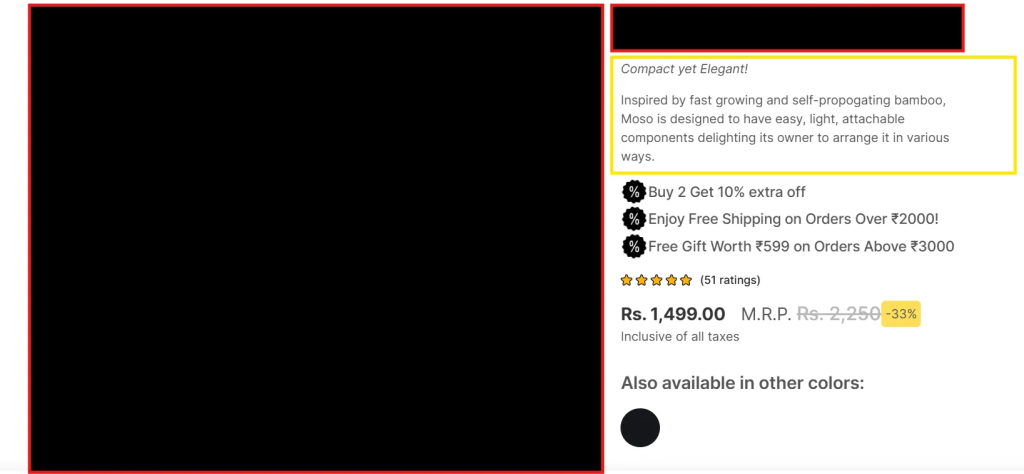
Now, let’s make it a bit easier—can you guess what the product is?
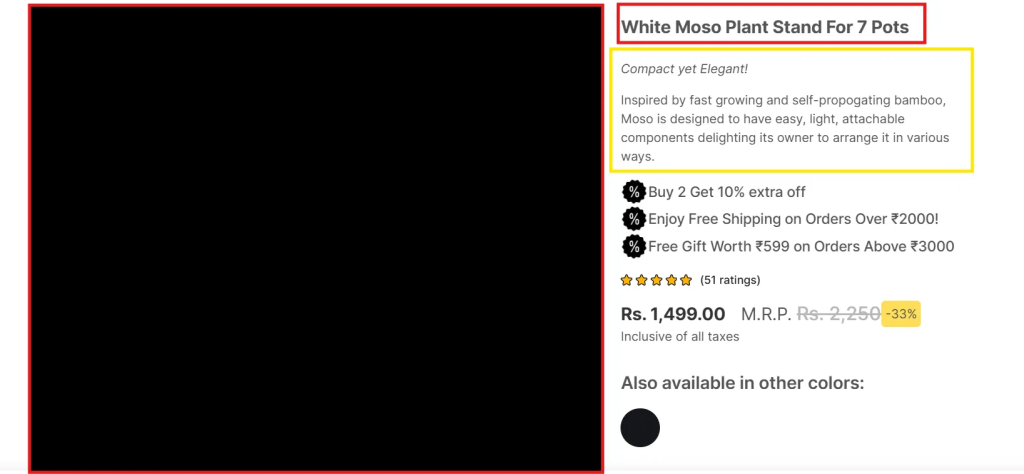
And let’s hope you had a good guess… drum roll — here’s the product!
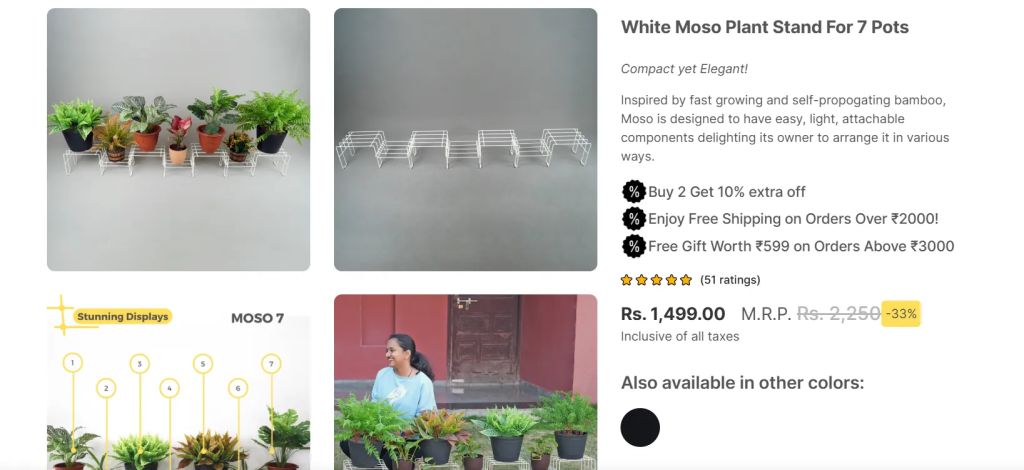
I think this is a powerful example of how weak copy can negatively impact your brand.
Now, let’s score the copy for Meshable’s Moso Plant Stand—and I’ll be brutally honest so you can learn from it and improve your own copy. Let’s break it down by each criterion.
1. Message
Rating: 2/5
The main message is hidden beneath vague phrases like “crafted for beauty & functionality.” It’s unclear what problem the stand actually solves or why it’s better than the rest. Good copy answers one question fast: What’s in it for me? Right now, this doesn’t.
👉 Fix: Lead with transformation. Instead of describing the product, show me how it changes my space—“Tidy your balcony in minutes. Turn chaos into calm.”
2. Clarity
Rating: 3/5
There’s potential here, but it’s buried under adjective overload. Phrases like “captivating floor-mounted plant stand” are unnecessarily long and flowery. The reader has to work too hard to find the point.
👉 Fix: Strip it down. Clean, sharp copy wins. “Elegant, durable, and made for tight spaces” is better than “mesmerizing honeycomb elegance in a modular display solution.”
3. Emotion
Rating: 1/5
This is where the copy truly misses the mark. It reads like a product manual. Where’s the pride, relief, or joy? There’s a line about “experience the joy,” but it’s hollow. I don’t feel anything.
👉 Fix: Tap into lifestyle. “Feel the calm of an organized space every time you walk outside.” That’s what emotional copy sounds like.
4. Connection
Rating: 2/5
The copy doesn’t show much understanding of the user. It doesn’t address pain points like cluttered balconies, heavy pots, or water damage. Instead, it jumps to specs and design elements.
👉 Fix: Speak directly to the reader’s world. “Tired of messy floors and ugly plastic stands? Moso’s got your back.”
5. Flow
Rating: 3/5
The ideas are there, but the transitions are choppy. It reads more like a checklist than a conversation. Some sentences are clunky and repetitive, making the reader’s journey feel disjointed.
👉 Fix: Create a narrative arc:
- Identify the problem
- Present the solution (your product)
- Paint the payoff
So… How Did It Do?
Let’s tally it up. When you combine vague messaging, weak emotional appeal, and lack of real-world connection, it adds up.
Final Score: 11/25
It’s not hopeless—but it’s not persuasive either. This copy has the bones of something solid, but right now, it’s more lipstick on a product photo than a compelling invitation to buy.
The good news? You’ve got a ton to work with. With a sharper message, a more empathetic tone, and a clearer story arc, this could truly stand out. Want help rewriting it? Let’s dig in.
SEO Analysis
Let’s talk about something that doesn’t get enough love in early-stage startups: your SEO foundation. If you’re building a brand like Meshable in a high-growth niche like indoor gardening, then ignoring your SEO health is like planting your best ideas in poor soil — they won’t grow.
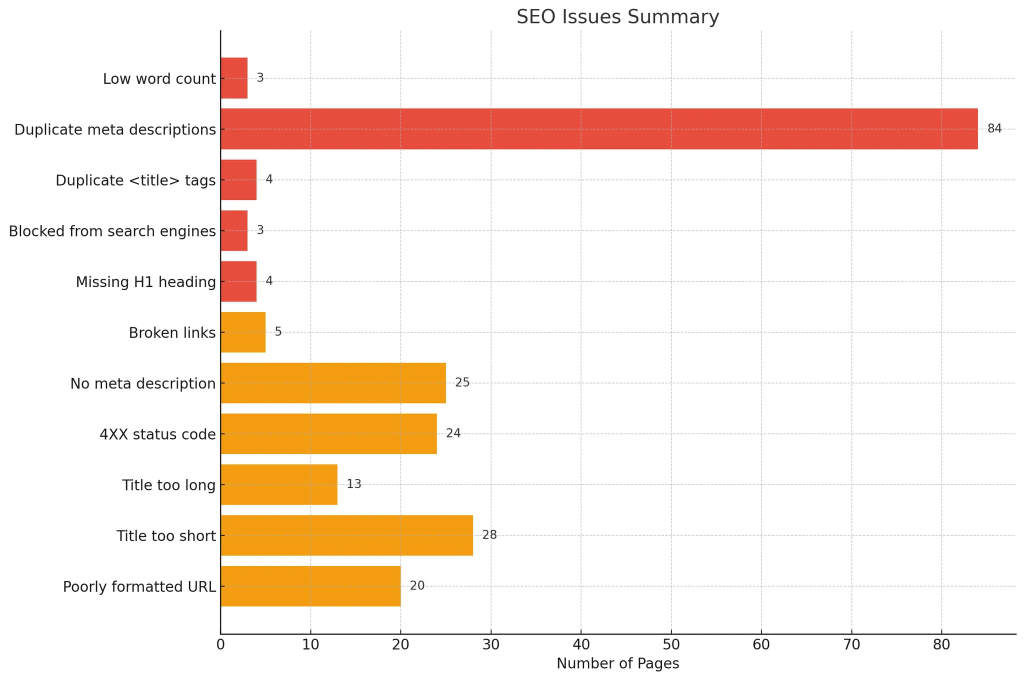
When we analyzed Meshable’s site, we found a mix of easily fixable issues and some more moderate ones that could seriously hurt their visibility and trust. If you’re building a brand in a fast-growing niche, don’t skip this part. Learn from these mistakes so you can get discovered and stay top-of-mind.
We’ve crawled 202 pages and found this.
| # | Issue | Pages Affected | Why It Matters | Fix Summary |
|---|---|---|---|---|
| 1 | Low Word Count | 3 Pages | Thin content ranks poorly | Add 300–500+ words; answer user questions; use tools like Answer the Public |
| 2 | Duplicate Meta Descriptions | 84 Pages | Hurts CTR and uniqueness | Write unique descriptions (<160 chars); focus on user benefit |
| 3 | Duplicate <title> Tags | 4 Pages | Weakens SEO signals and user clarity | Create keyword-rich, unique titles (<60 chars) |
| 4 | Missing H1 Headings | 4 Pages | Reduces structure and clarity | Add 1 clear H1 per page with a target keyword |
| 5 | Broken Links | 5 Pages | Damages UX and credibility | Fix/remove links; set up 301 redirects |
| 6 | Missing/Weak Meta Descriptions | 25 Pages | Google auto-generates bad snippets | Write custom descriptions with a CTA and value |
| 7 | Blocked Pages | 3 Pages | Unintentionally hidden from search | Check robots.txt and noindex; unblock important pages |
| 8 | Title Tag Length Issues | 41 Pages (13 long, 28 short) | Poor display or missed SEO opportunities | Keep titles between 45–60 characters; make them click-worthy |
| 9 | Poorly Formatted URLs | 20 Pages | Confuses users and search engines | Use hyphens; avoid dates/symbols; keep URLs short and descriptive |
Site speed
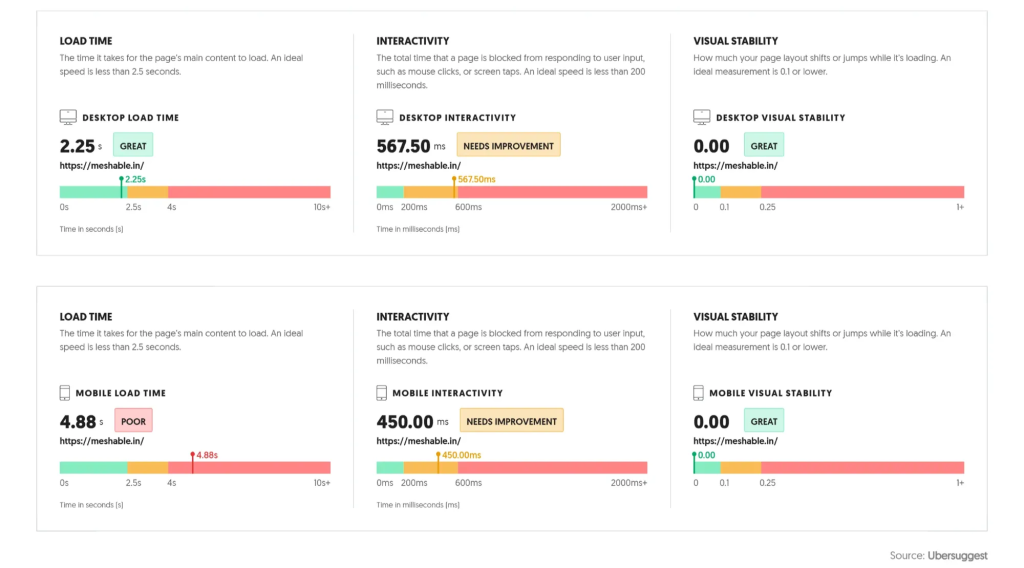
Let’s break down how Meshable performs in terms of speed — and more importantly, what you can learn from it to improve your own site.
Desktop Performance
Meshable’s desktop load time is 2.25 seconds, which is excellent. That’s within the ideal range and shows that the page’s main content is delivered promptly.
But when it comes to interactivity, there’s trouble. It takes 567.5 ms for Meshable to respond to user actions — way over the 200 ms benchmark.
If you see a similar lag on your site, it’s usually because of heavy JavaScript blocking the main thread. You’ll want to defer non-critical scripts, break long tasks, and reduce JavaScript payloads overall.
Now here’s the good news — Meshable nails visual stability on desktop with a perfect 0.00 score. That means no annoying layout shifts while loading, which keeps the user experience smooth and frustration-free.
Mobile Performance
Here’s where things fall apart for Meshable. On mobile, the site takes 4.88 seconds to load — nearly double the ideal 2.5 seconds.
If your mobile users are bouncing, this could be why. You can fix this by compressing images, serving next-gen formats like WebP, using lazy loading, and minimizing CSS and JS files.
Interactivity isn’t great on mobile either. Meshable responds in 450 ms, which still needs improvement.
To improve this on your own site, audit your third-party scripts, avoid long JavaScript tasks, and prioritize mobile-friendly design with efficient layouts.
Visual stability remains strong on mobile with another perfect 0.00 score. That’s something you should aim for, especially if your layout includes ads or dynamic content.
What You Can Take Away
Meshable gets full marks for visual stability, but it stumbles with interactivity and mobile speed — and that’s where you should focus your attention, too.
If your mobile site is slow or laggy, start by cleaning up JavaScript, compressing images, and enabling proper caching. These changes alone can lead to massive gains in both performance and user satisfaction.
Off-page SEO
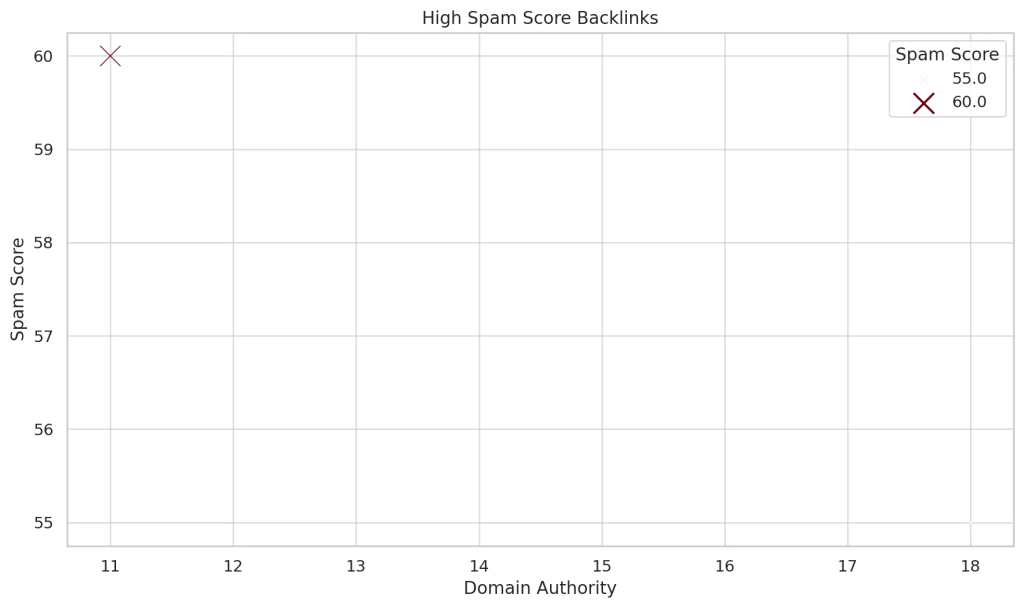

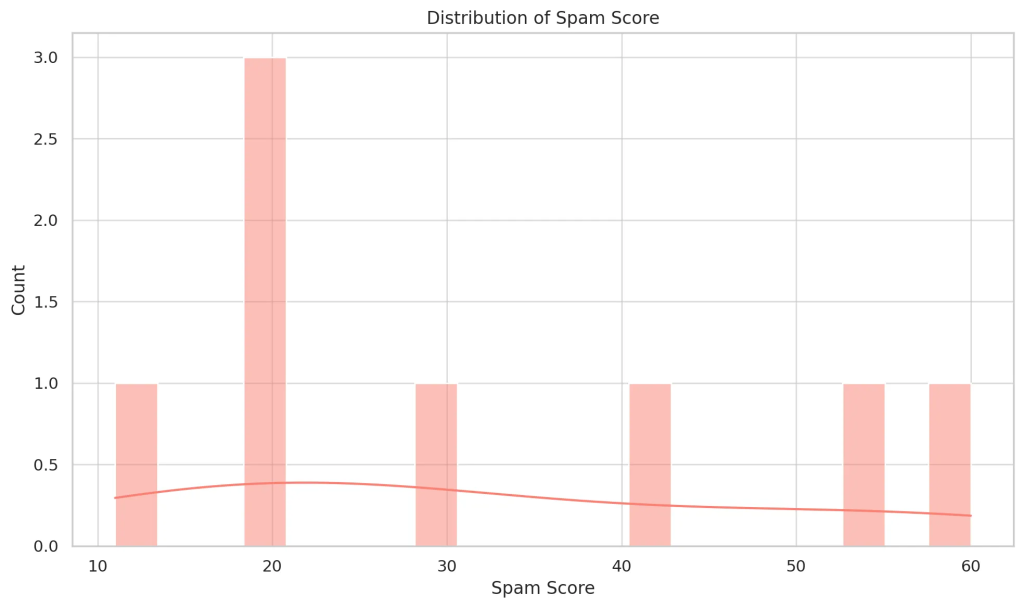

Meshable’s off-page SEO, which plays a big role in how search engines rank the site.
Off-page SEO is all about building your site’s reputation through external factors like backlinks, domain authority, and spam scores. Based on the data, here’s what I found and how you can improve.
First, let’s look at Meshable’s backlinks—there are only 17, which is quite low for an e-commerce brand. The “Backlinks Discovered Over Time” chart shows a steady discovery of backlinks from 2022 to mid-2025, but the volume hasn’t grown much.
To boost this, you should reach out to indoor gardening blogs or local Maharashtra directories for guest posts or listings.
Next, the “High Spam Score Backlinks” scatter plot reveals a red flag: some backlinks have spam scores of 55 and 60, which can hurt your rankings.
The “Distribution of Spam Score” histogram confirms many backlinks score above 20, with a peak around 30. You need to audit these links using tools like Ahrefs and disavow the spammy ones to protect your site.
Finally, the “Distribution of Domain Authority” histogram shows most backlinks come from sites with a domain authority (DA) of 10-14, which is decent but not great.
To improve, try partnering with higher DA sites—like wellness or gardening magazines—for backlinks. This will strengthen Meshable’s authority and help you rank better for indoor gardening keywords.
Other Niche Players
Now that we’ve taken a good look at Meshable, it’s time to study their competitors — and more importantly, learn what works and what doesn’t from their playbooks.
Bombay Greens :
Product Analysis
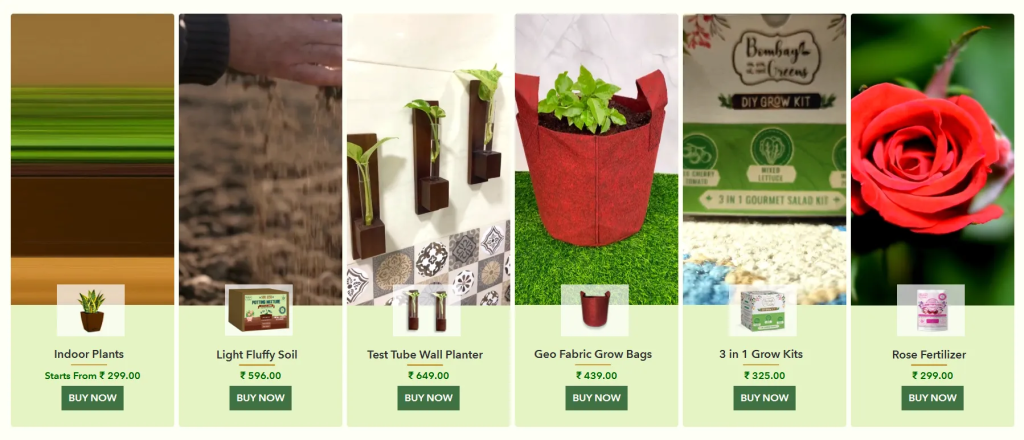
Bombay Greens started because the founders wanted fresh, healthy salads at home but found it hard to get good quality produce from the market. Like many beginners, they were confused by all the advice online and didn’t know where to start with gardening.
That’s why they built Bombay Greens—to make gardening easier for people who might not have a lot of experience or space.
Their main products are DIY gardening kits that come with everything you need: seeds, pots, cocopeat discs, fertilizer, name tags, and simple instructions.
The idea is to help anyone grow microgreens, herbs, or vegetables at home, even if you’re new to gardening.
They also offer things like organic fertilizers and gardening accessories, all designed to make the process straightforward. Bombay Greens really focuses on making gardening simple and accessible for everyone who wants to try it.
Ads Analysis
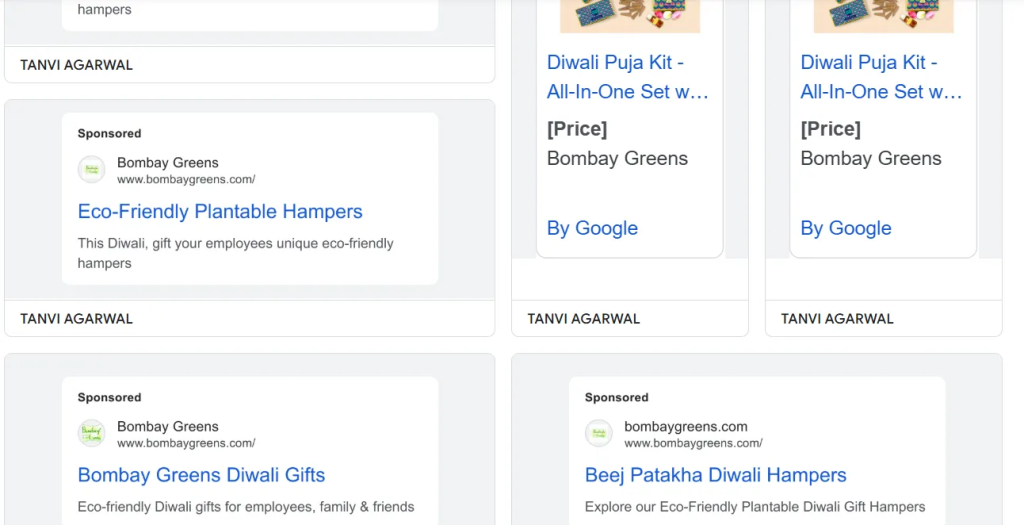
Bombay Greens is a Mumbai-based brand specializing in easy-to-use DIY gardening kits, organic fertilizers, seeds, and eco-friendly gardening accessories, making home gardening accessible and enjoyable for everyone.
Bombay Greens keeps things simple and accessible. Their ads focus on DIY gardening, especially for beginners and even kids.
They also highlight gifting options with eco-friendly hampers, smartly tying in emotional occasions like Diwali. That adds depth to their messaging and appeal.
Sustainability is front and center. Their messaging around rural women and green packaging appeals to conscious buyers.
Bombay Greens connects emotionally by highlighting plants, not just the planters. Meshable, in contrast, focuses on balcony innovation — a useful feature, but not the core reason why people buy. Always lead with your customer’s “why.”
Social Media Analysis
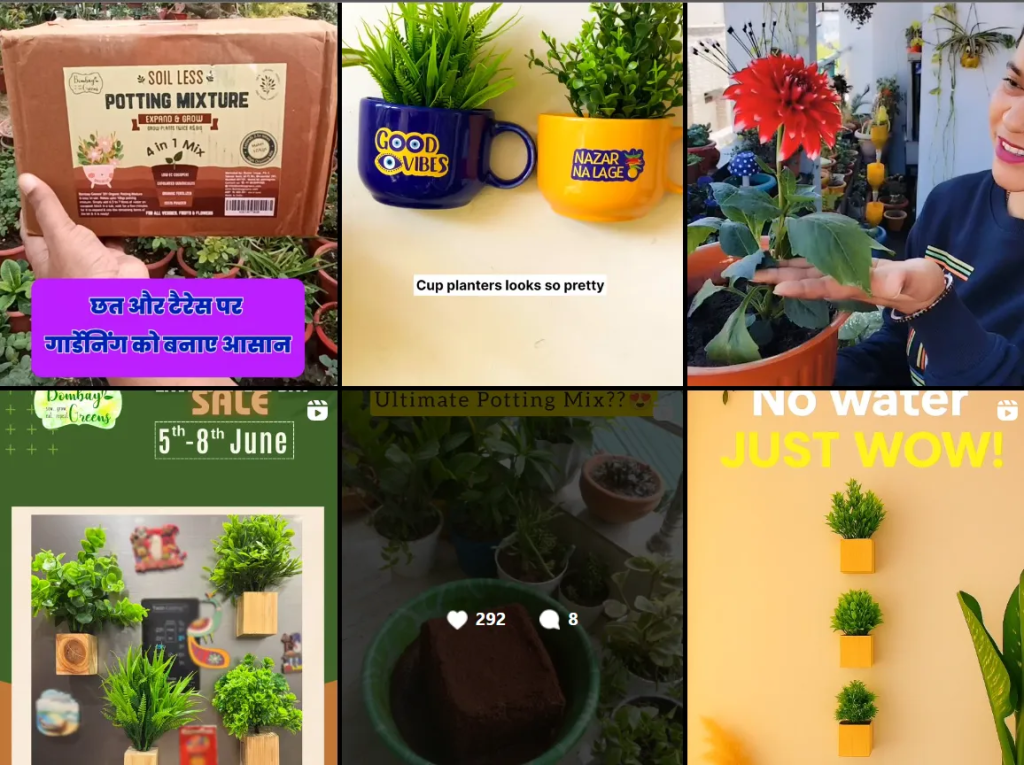
Bombay Greens’ social media, and they’re super active on Instagram and Facebook. Their feeds are packed with user-generated content (UGC) that feels relatable and ties right into what plant lovers care about. It’s solid, but there’s room to grow.
Their UGC-style reels are consistent and engaging, which is awesome for building trust. But the ever-changing faces in their videos? It makes things feel a bit scattered and less authentic.
It’s like they’re leaning on freelance creators for these reels, which can dilute their brand’s vibe. I’d love to see them hire one dedicated creator to churn out polished, value-packed videos. Consistency in voice and style could make their social media pop even more!
On the appreciation side, Bombay Greens clearly knows how to attract their customers. Their content has changed a lot—from mostly posting templates and static images before, to now sharing videos that teach viewers how to use their products and give practical gardening tips. This change is obvious in their growing follower count.
It really shows how important it is to understand what kind of content your audience likes. Bombay Greens is doing well by mixing educational and promotional content, which proves that the right balance can boost both engagement and growth.
Grow Smart Greens
Product Analysis
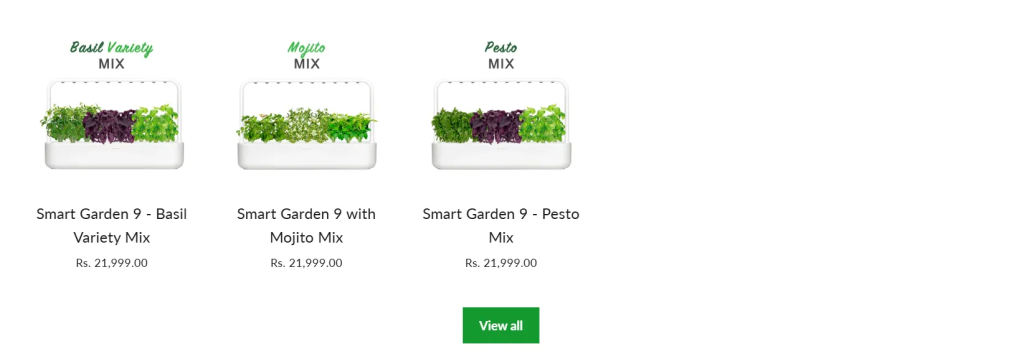
Grow Smart Greens is all about making home gardening simple and accessible, especially for people living in cities. Their main focus is on DIY grow kits and plant pods, which come with everything you need—seeds, pots, growing medium, and easy instructions—so anyone can start growing microgreens, herbs, or small veggies at home, even without prior experience.
What really sets them apart is the wide variety of plant pods and related accessories they offer. You can choose from over 35 types of herbs, flowers, leafy greens, and more, plus find a good selection of add-ons to support your indoor gardening setup.
On the other hand, when it comes to indoor garden products, bundles, and mixes, their range is a bit more limited compared to their plant pod selection. While they do have smart indoor gardens and starter kits, there are fewer options for bundled products or mixed kits for those who want a more all-in-one solution.
This means if you’re looking for variety in plant pods and accessories, Grow Smart Greens has a lot to offer. But if you want ready-made bundles or a wide range of indoor garden systems, the choices are more restricted. Overall, their strength lies in the diversity of plant pods and making it easy for anyone to get started with growing plants at home.
Ads Analysis
Ads of GrowSmartGreens have more stitches than Meshable. They don’t have anything in their ads other than text. So let’s see what other elements should be there in the ads to make them more effective.
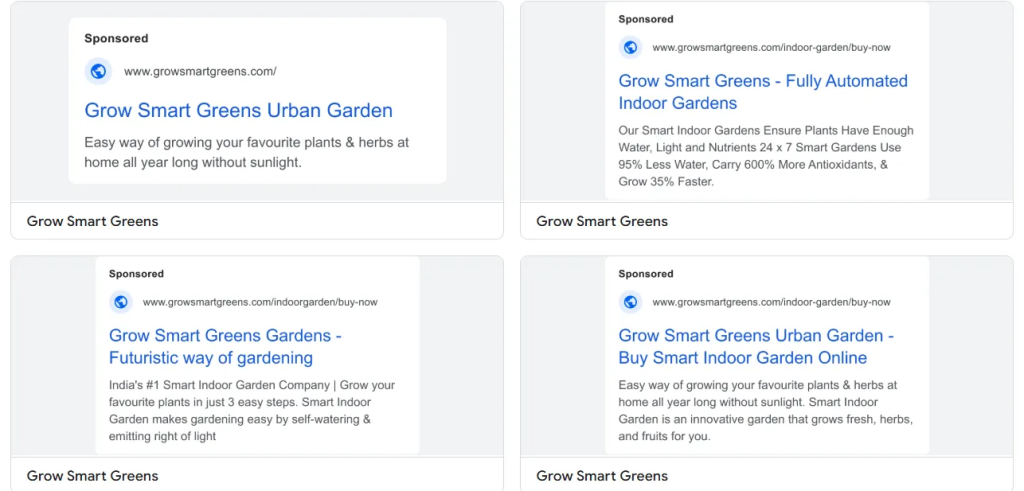
GrowSmartGreens runs text-only ads — and that’s a missed opportunity. Without visuals, they’re losing out on emotional impact, brand recognition, and stopping power.
Visuals grab attention faster than text. A strong image, color, or video makes users pause; plain text doesn’t.
They also fail to use visual branding like logos or color schemes, making it harder for people to recall the brand.
Worse, without images, they can’t demonstrate how their smart gardens work. Customers can’t visualize the product’s ease or value.
Lesson: Even though GrowSmartGreens focuses their message well — “zero effort gardening” — it lacks emotional connection. Don’t just say it’s effortless, show it. Visual storytelling wins hearts and conversions.
Note from GrowSmartGreens ads:
The only thing to note from their ads is that they are solely focusing on effortless gardening, emphasizing the simplicity of their smart gardens —“Grow plants with zero effort right on your countertop” — which targets urban consumers who lack time or gardening expertise. This shows that having a clear, focused message is powerful, but it must also connect emotionally with the customer. For example, Meshable was also solely focused on improving balconies, but that’s not the reason why plantfluencers would buy it. This is yet another reason why it’s important to truly understand our customers.
Social Media Analysis
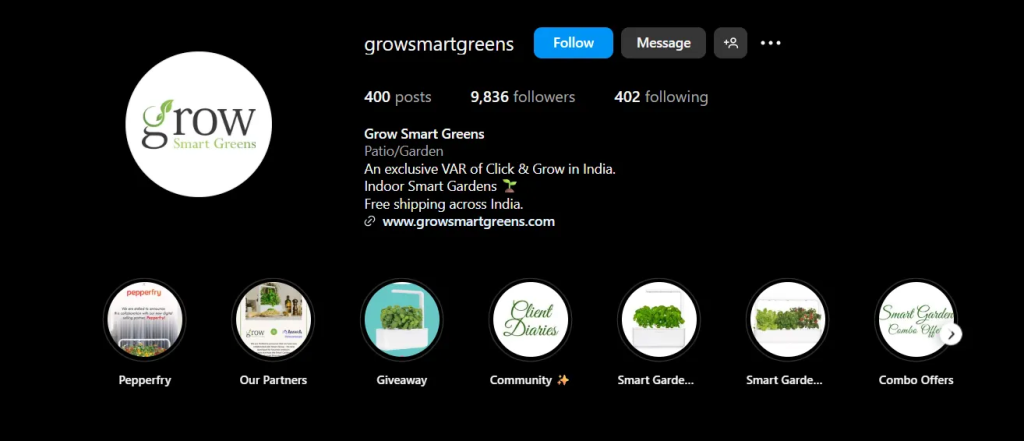
When I look at Grow Smart Greens’ Instagram page, I see a brand that really understands what their audience wants—educational and promotional content that’s both useful and visually appealing. Their videos are well-edited, the aesthetics are clean, and the overall quality is impressive. In marketing, if your content is doing its job, that’s already a win.
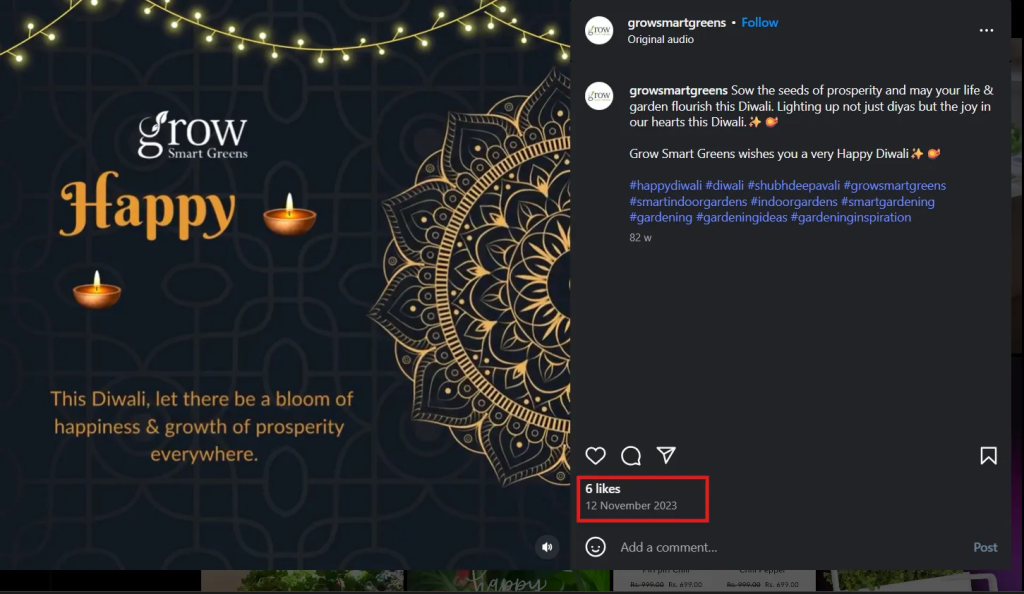
on 12-November-2023
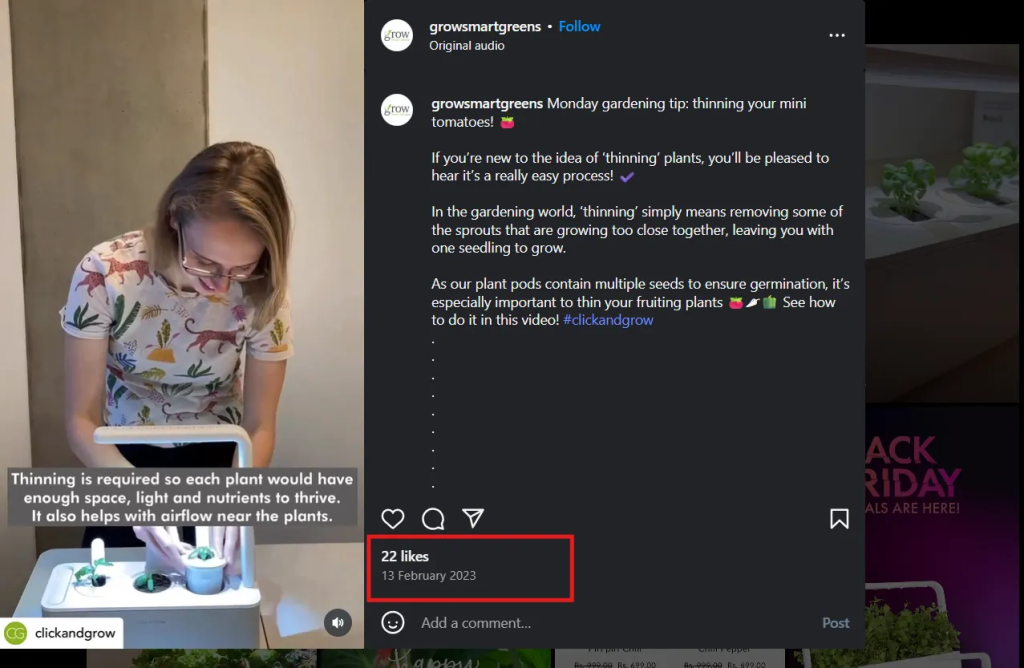
on 13-february-2023
But here’s the catch: their biggest challenge is consistency. They’re putting out content that’s just as good, if not better, than Bombay Greens, but the gaps between their posts make it hard for them to build momentum. I can’t help but think that if they posted more regularly, they could attract 30–40% more customers, simply by staying top-of-mind and working with Instagram’s algorithm, which rewards fresh, frequent content.
It’s clear that Grow Smart Greens has the right formula—engaging videos, strong educational value, and a great visual brand. But without a steady posting schedule, even the best content can get lost in the feed. If they can solve this, I believe their reach and engagement would skyrocket, helping them stand out in the competitive indoor gardening space.
Ugaoo
Product Analysis
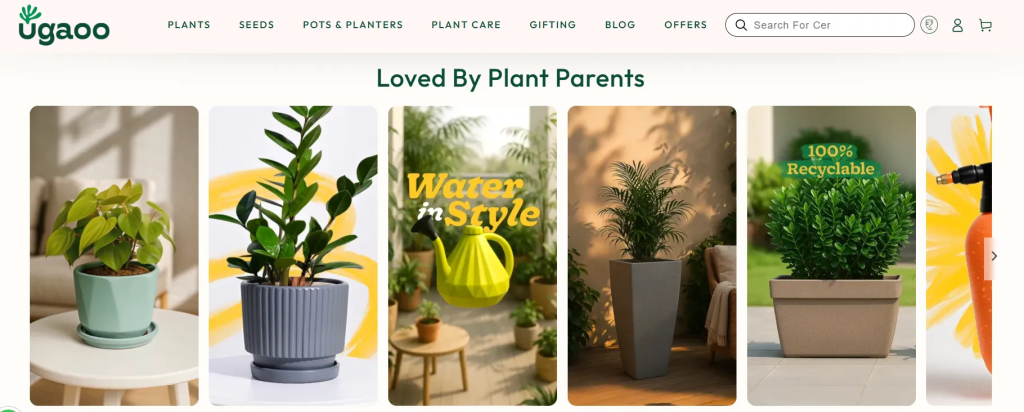
Ugaoo is a well-known name in the home gardening space, especially for people who want to bring greenery into their homes and balconies.
Their product range is broad, covering everything from seeds and live plants to pots, planters, and gardening tools. This makes it easy for beginners and experienced gardeners alike to find what they need in one place.
One of Ugaoo’s strengths is their variety of indoor gardening products, including decorative planters, soil mixes, and plant care accessories.
They also offer bundles and combo packs, which are helpful for those looking to get started quickly or try out new plant varieties without the hassle of picking individual items.
Compared to brands focused mainly on plant pods, Ugaoo’s selection of pods and related accessories is more limited. They put more emphasis on indoor plants, gardening tools, and curated bundles rather than a large variety of plant pods or refills.
Overall, Ugaoo stands out for its wide assortment of gardening products and its focus on making indoor gardening attractive and convenient. However, if you’re specifically looking for a big selection of plant pods and pod accessories, you might find their range a bit less extensive than some competitors.
Ads Analysis

Ugaoo’s ads are a big step up. They combine emotional storytelling with clarity, visuals, and persuasive copy. Their brand philosophy, “Plants grow people,” is brilliant. It reframes gardening as a personal journey, not just a hobby.
They also eliminate customer anxiety with promises like “Plant parenting made simple.” Addressing fears builds confidence.
Campaigns like “Moms in All Forms” bring diversity and relatability. Real people make for real connections.Their product descriptions are spot on: “Water once a week,” “Needs bright indirect sunlight.” No jargon, no fear.
They promote plants as tools for growth, not just decor. This adds emotional weight and increases perceived value.
They also use light urgency well — “Free delivery above ₹499.” It nudges buyers gently without pressure.
What you can learn: Ugaoo balances inspiration and clarity. If your ads only inspire but don’t guide, you’ll lose conversions. Use visuals, eliminate fear, and make your message about your customer — not your product.
Note from Ugaoo:
In some campaigns, they lean heavily on inspiration but lack clear and direct calls-to-action, which can reduce conversion rates—especially for users who need a gentle nudge to make a purchase.
Solution: Gentle Urgency Sells
Using subtle promotions like “Free Delivery Above ₹499” can drive action without feeling pushy. This tactic has been effectively used in the ad shown below.
Social Media Analysis
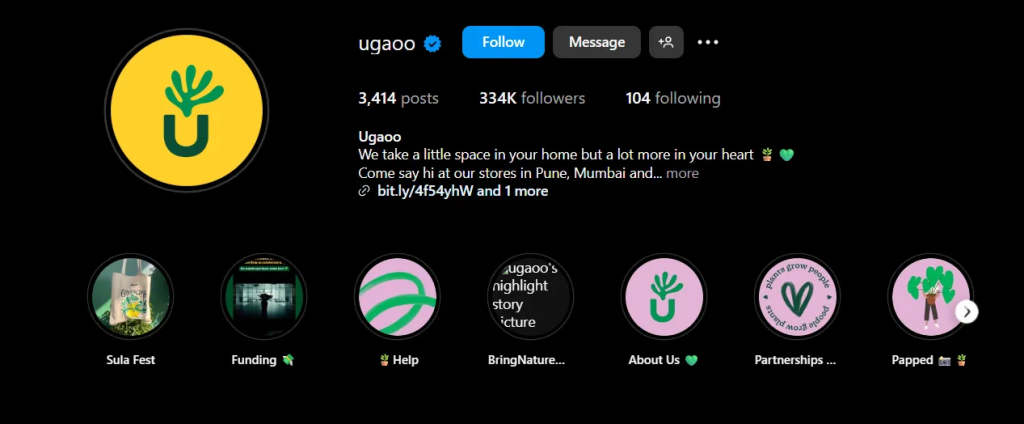
Ugaoo’s Instagram is a good case study in how variety and frequency can impact a brand’s online presence. While their feed is packed with plant care tips, product showcases, and customer stories, two big issues stand out: the lack of a consistent “face” for the brand and irregular posting times. The frequent switch in presenters and styles makes it hard for followers to instantly recognize Ugaoo’s content in their feed, which can weaken brand recall.
Timing is another hurdle. Though Ugaoo has a large content archive, their posting schedule is inconsistent, leading to dips in engagement and missed opportunities with Instagram’s algorithm, which favors regular activity. Addressing this with a steady, predictable posting rhythm could help boost their reach and keep their audience more engaged.
Another area for improvement is engagement tracking and sentiment analysis. While Ugaoo’s posts get likes and comments, there’s little evidence they’re actively monitoring sentiment or leveraging real-time analytics to adapt their strategy. By tapping into advanced social media analytics tools, they could better understand what their audience feels, identify trending topics, and quickly respond to shifts in interest or feedback. This data-driven approach would allow them to fine-tune their content, making it more relevant and impactful.
In summary, Ugaoo’s Instagram is visually appealing and educational, but their social strategy could be much stronger with a consistent brand voice, regular posting schedule, and deeper use of analytics to guide content decisions.
Audience Analysis: Meet Priya Sharma
Let’s explore how Meshable can improve its marketing efforts. The most important thing to understand is that almost all marketing is wasted if it’s not tailored to the right audience. Audience targeting accounts for 90% of an ad’s effectiveness, and understanding your audience makes up 80% of effective copywriting.
One of the best ways to approach this is by creating an audience persona. So let’s meet Priya Sharma.
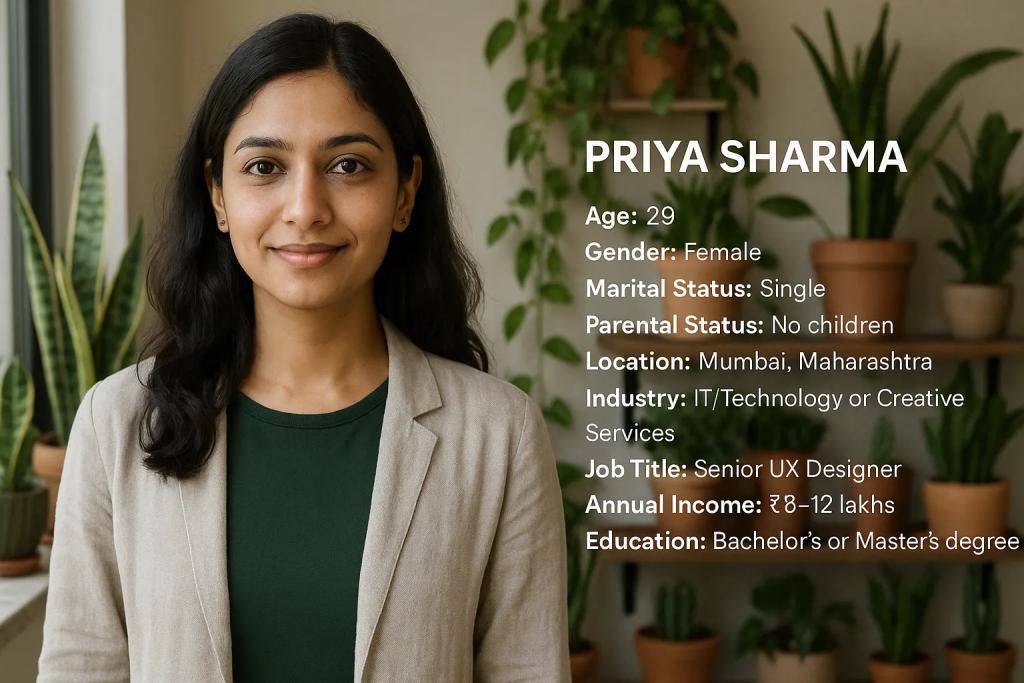
- Name: Priya Sharma
- Age: 29
- Gender: Female
- Marital Status: Single
- Parental Status: No children
- Location: Mumbai, Maharashtra (urban metro area)
- Industry: IT/Technology or Creative Services
- Job Title: Senior UX Designer
- Annual Income: ₹8–12 lakhs
- Education: Bachelor’s or Master’s degree (often in design, engineering, or business)
see how nice it is to first understand your customers let’s drive some insight from this persona?
- Priya represents the growing segment of urban millennials and Gen Z professionals who live in compact apartments in major Indian cities like Mumbai, Bengaluru, or Pune
- She is career-focused, digitally savvy, and values wellness, aesthetics, and sustainability in her lifestyle choices.
- Her interest in indoor gardening is driven by a desire to improve air quality, reduce stress, and create a visually appealing home environment.
- She purchases plants and gardening accessories online, seeks low-maintenance options like succulents and snake plants, and is influenced by social media trends and plantfluencers.
- Priya’s demographic is a key driver of the indoor plant market’s rapid growth in India, especially in western urban regions.
We crawled over 25 sources and identified these parts in the Indoor Gardening Niche in India
Hopes & Dreams
- Healthier Living Spaces: Many urban Indians aspire to create healthier homes by improving air quality and reducing indoor pollution through plants like snake plants, peace lilies, and spider plants, which are natural air purifiers.
- Stress Relief & Mental Wellness: There is a strong desire for the calming and therapeutic effects of indoor gardening, with people seeking a daily connection to nature for stress reduction, improved mood, and emotional well-being.
- Aesthetic & Lifestyle Upgrade: Urban dwellers dream of lush, Instagram-worthy interiors. Indoor plants are seen as status symbols and essential elements of modern home decor, offering a sense of pride and accomplishment.
- Sustainable & Self-Sufficient Living: Growing herbs and vegetables indoors is tied to hopes of food security, sustainability, and healthier eating habits. Many dream of harvesting fresh produce from their own kitchen gardens.
- Community & Identity: The rise of ‘plantfluencers’ and online gardening communities reflects the aspiration to belong to a like-minded, eco-conscious group and to be recognized for green expertise.
Pains & Fears
- Plant Mortality & Failure: A major pain point is the frequent death of plants due to lack of proper care knowledge, insufficient light, overwatering, or pest infestations, leading to discouragement and wasted investment.
- Quality & Supply Chain Issues: Buyers often face poor-quality plants from online sellers, with issues like premature harvesting, inadequate hardening, and inconsistent standards causing frustration.
- Maintenance Overwhelm: Many fear the time and effort required for plant care, especially with delicate or exotic species, and worry about keeping up with watering, pruning, and pest control routines.
- Space Constraints: Limited living space in urban apartments makes it difficult to accommodate larger or multiple plants, restricting the scope of indoor gardening dreams.
- Unreliable Information: Conflicting advice and lack of access to expert guidance leave many confused about best practices for plant selection, placement, and care.
Barriers & Uncertainties
- Knowledge Gap: A significant barrier is the lack of horticultural expertise among both buyers and some sellers, resulting in improper plant care and high mortality rates.
- Light & Environmental Limitations: Insufficient natural light, fluctuating indoor temperatures, and low humidity can hinder plant growth, making it challenging to maintain a thriving garden indoors.
- Product & Service Reliability: Concerns about the reliability of online nurseries, including delayed deliveries, poor packaging, and misleading product images, create uncertainty for buyers.
- Cost & Value Perception: The perceived high cost of quality plants, planters, and smart gardening tools can deter new entrants, especially if previous attempts have failed.
- Technological Adoption: While smart gardening solutions (like self-watering pots and plant sensors) are emerging, some consumers are unsure about their effectiveness or how to use them, leading to hesitation in adoption.
- Sustainability Concerns: Some worry about the environmental impact of non-biodegradable pots, chemical fertilizers, and the carbon footprint of plant transportation, questioning whether their gardening practices are truly eco-friendly
From this, we can understand the pain points and pleasure points of Meshable’s audience.
Areas to Improve
Here are the key areas Meshable needs to improve in order to become a truly successful brand:
- Re-evaluate and revamp the copy strategy
- Create an action plan for fast-paced social media content
- Generate more SEO-driven traffic
- Build an effective email marketing funnel
A well-executed plan that brings all of this together can result in a 30% to 60% increase in ROI.
Conclusion
Here’s what we learned:
- A holistic approach to marketing—from copy and ads to SEO
- Insights into the key players in the indoor gardening space
- How to create better user-generated content (UGC) videos


Leave A Comment